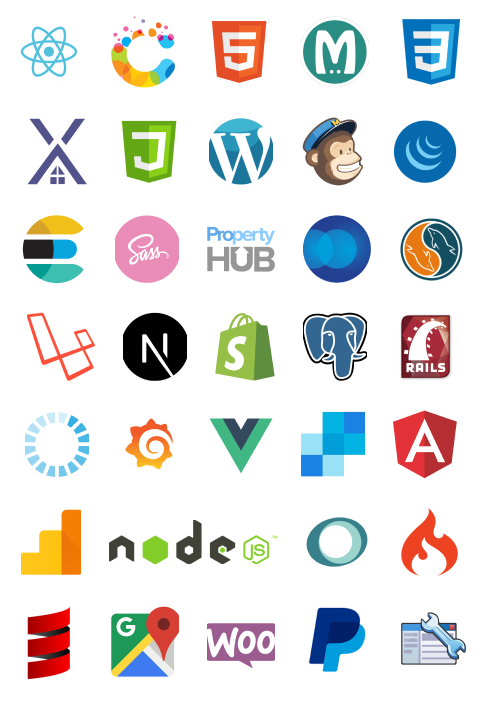VHS beat Betamax. The QWERTY keyboard has persisted for 150 years despite being designed to prevent mechanical typewriter jams—a problem that stopped being relevant in the 1930s. Dvorak is demonstrably faster, yet virtually no one uses it.
When you’re making technology decisions, you face these same dynamics. Pick the wrong standard and you’re stuck with it. Pick the right one and you ride the wave. But here’s the thing: technical merit doesn’t predict winners.
Network effects, path dependence, and ecosystem strategy determine outcomes more than technical quality. Understanding these forces helps you predict which standards will dominate and when to adopt versus wait. This article is part of our comprehensive technology power laws guide, which explores the mathematical forces that determine tech market winners.
This article walks through historical cases—VHS versus Betamax, QWERTY versus Dvorak—and extracts patterns you can apply to modern decisions around container standards, protocols, and cloud platforms. You’ll get practical criteria for evaluating competing standards and timing adoption strategically.
Why Does Technically Inferior Technology Often Win?
Technically superior products frequently lose to “good enough” alternatives.
Three forces override technical merit: network effects (the product gets more valuable as more people use it), path dependence (early choices lock you into certain paths), and installed base effects (existing users create unstoppable momentum). The network effects mathematics explain why these forces favour first movers—early advantages compound exponentially rather than linearly.
Market dynamics favour standards that solve ecosystem problems over those with superior specs. VHS’s longer recording time attracted movie studios, creating a complementary goods advantage that Betamax’s superior image quality couldn’t overcome.
So betting on technical superiority alone? That’s a losing strategy.
VHS vs Betamax: Anatomy of a Standards War
Sony launched Betamax in 1975. JVC followed with VHS in 1976.
Betamax had superior image quality, smaller cassette size, and the first-mover advantage. VHS had longer recording time (2 hours versus 1 hour initially), lower cost, and open licensing to other manufacturers.
JVC’s licensing strategy created a manufacturing ecosystem. Sony’s restrictive approach limited Betamax production. That decision proved more influential than any technical specification.
The turning point? VHS’s longer recording enabled full-length movies. Video rental stores stocked what people rented. More VHS users meant more rental inventory, which attracted more VHS adopters. That’s a self-reinforcing loop.
By 1980, VHS controlled 70% of the North American market. Betamax never recovered. Sony officially discontinued Betamax in 1988 after losing an estimated 90% of market share. This demonstrates the winner-take-all dynamics in standards battles—once a standard crosses critical mass, network effects create insurmountable advantages.
Ecosystem strategy trumps technical superiority.
The Complementary Goods Advantage: Movies Tipped the Balance
Complementary goods are products or services that enhance the primary product’s value. Movies for VHS players. Apps for smartphones. Cloud services for AWS.
VHS’s 2-hour recording capacity fit Hollywood movie lengths. Betamax’s 1-hour limit didn’t. Video rental stores faced an inventory decision: stock both formats or standardise on one.
The network effect loop kicked in. More VHS owners meant rental stores stocked more VHS tapes. That attracted more VHS buyers, which strengthened the rental inventory bias. Complementary goods availability became a self-reinforcing advantage independent of video quality.
You see the same pattern in modern platforms. iPhone app ecosystem. Amazon AWS services. Docker container images.
So when you’re evaluating standards, assess ecosystem strength, not just core product specs. Complementary goods availability often predicts the winner before market share does.
QWERTY: The 150-Year Reign of an Inefficient Keyboard
The QWERTY layout was designed in the 1870s to prevent mechanical typewriter jams by separating frequently-paired letters. That purpose became obsolete with electric typewriters in the 1930s and is completely irrelevant for computers.
Dvorak keyboard, introduced in 1936, is demonstrably faster. Controlled studies show 10-15% speed improvement. Despite efficiency gains, Dvorak adoption remains under 1% after 90 years.
Why does QWERTY persist? Switching costs. Retraining requires 40-80 hours with temporary productivity loss. Muscle memory creates high personal switching cost. Shared computers force QWERTY compatibility.
The installed base creates a chicken-and-egg problem. Manufacturers don’t support unpopular layouts. Users don’t switch without support.
Path dependence locks in the early choice. Typewriter training programmes standardised on QWERTY, creating generational lock-in. Once established, inferior standards resist displacement even when demonstrably better alternatives exist. This same pattern explains modern legacy persistence in databases and programming languages—COBOL still runs critical banking systems for the same reasons QWERTY persists on keyboards.
Path Dependence: How Early Choices Lock In Future Options
Path dependence is when historical decisions constrain future options, even when better alternatives exist. Early adoption creates investment—training, integration, tooling—that makes switching increasingly costly.
This is different from simple lock-in. It’s an actual narrowing of viable options. Once typing programmes standardised on QWERTY, alternative keyboards became unviable. Manufacturers stopped producing them. Training materials disappeared. Choosing Dvorak didn’t just become expensive—it became practically unavailable.
Positive feedback loops amplify early advantages. More users lead to more training materials, which bring more new users. You see this in programming language ecosystems, cloud provider APIs, container orchestration platforms.
Path dependence is reversible early but becomes locked in after reaching a threshold. The lesson? Timing matters.
The Installed Base Effect: Momentum That Can’t Be Overcome
The installed base effect is the competitive advantage from a large existing user population creating self-reinforcing dominance. Value comes from momentum and ecosystem investment, not just user count.
A larger base attracts more complementary goods investment. Windows maintains market share because manufacturers optimise for the dominant standard. Hardware drivers appear for Windows first. Software compatibility testing prioritises Windows.
This creates asymmetric competition. You typically need 3-5x technical superiority to overcome a 60%+ market share. If a competitor reaches 50%+ share, displacement becomes improbable.
The takeaway? Wait for a clear installed base leader before adoption, or adopt early enough to influence the outcome.
Modern Protocol Wars: USB-C, HTTPS, and Container Standards
Protocol wars continue. USB-C versus Lightning. HTTP versus HTTPS. Docker versus Podman. Kubernetes versus alternatives.
USB-C adoption shows path dependence in action. Apple’s installed base delayed universal adoption despite technical superiority. Existing accessories and user familiarity created switching costs.
HTTPS transition demonstrates ecosystem pressure. Browser warnings created a “scarlet letter” effect for HTTP sites. Search engines penalised HTTP sites in rankings. The web platform ecosystem coordinated to make the old standard untenable.
Container standards show network effects clearly. Docker Hub image availability created ecosystem lock-in. Kubernetes won container orchestration through second-mover advantage: it learned from Mesos and Swarm, then built a superior ecosystem.
The same mechanisms operate in modern standards. Faster adoption cycles, but the fundamental dynamics remain unchanged.
Network Effects in Standards Adoption: Why Early Lead Compounds
How do you measure network effects as they’re happening? Track ecosystem metrics, not just user counts.
For container platforms, count Docker Hub images and Helm charts. For cloud platforms, track AWS Marketplace services and integration partnerships. For programming languages, measure npm packages or PyPI libraries.
Here are the leading indicators that matter:
Complementary goods growth rate beats current availability. A standard with 1,000 packages growing 20% monthly has stronger momentum than 10,000 packages growing 2% monthly.
Developer ecosystem activity reveals commitment. Track conference attendance, GitHub stars, Stack Overflow questions, job postings.
Integration ecosystem expansion shows platform thinking. When third-party tools build on top of a standard—monitoring solutions, deployment platforms, security tools—it’s becoming infrastructure.
These metrics help you identify the likely winner before it becomes obvious.
Strategic Timing: When to Pick a Standard vs When to Wait
Here’s the most practical question: do you adopt an emerging standard early or wait for market maturity?
First-mover advantage gives you: influence on ecosystem direction, expertise early, avoid migration costs later. First-mover risks: betting on a losing standard, wasting resources, facing immature tooling.
Second-mover advantage gives you: learning from pioneers’ mistakes, adopting the proven winner, leveraging a mature ecosystem. Second-mover risks: competitors gain expertise advantage, higher switching costs, being late to market.
Track market share velocity, ecosystem growth, and complementary goods availability.
Safe adoption: wait until a clear leader emerges (50%+ share) or the ecosystem reaches maturity. Early adoption criteria: strong ecosystem signals, open licensing, solving a genuine ecosystem problem rather than just technical improvement.
Risk mitigation: build in abstraction layers, multi-standard support, escape hatches.
Lessons for CTOs: Predicting Winners in Standards Battles
How do you predict which standard will win?
Technical merit alone predicts losers, not winners. Betamax proves this.
Here’s a winner prediction framework: (1) ecosystem strength, (2) network effect velocity, (3) complementary goods availability, (4) licensing model, (5) installed base trajectory. For a broader understanding of how these forces shape technology markets, see our technology power laws guide.
Ecosystem strength: count developers, integrations, third-party tools, documentation quality, community activity. Network effect velocity: measure adoption acceleration, not just current share. Growing from 5% to 15% signals stronger momentum than declining from 60% to 55%.
Complementary goods act as a leading indicator. Track ecosystem investment—conferences, training, books, tools—before market share reflects it.
Licensing model matters. Open standards typically beat proprietary in infrastructure layers. TCP/IP beat OSI. VHS beat Betamax.
Installed base trajectory: 30% share with 5% monthly growth beats 50% share with flat growth.
Warning signs to watch for: slowing ecosystem growth, declining complementary goods investment, increasing vendor lock-in.
Use this framework to identify the likely winner before market consensus forms. For deeper exploration of how these patterns apply across different technology markets, see our complete network effects overview.
FAQ Section
What is path dependence and why does it matter for technology choices?
Path dependence is when historical decisions constrain future options, even when better alternatives exist. Early technology choices create investments in training, integration, and tooling that make switching increasingly costly. The upshot? Initial standard selections have compounding consequences. Early choices narrow your options over time, making it necessary to evaluate ecosystem viability, not just immediate technical fit.
How can I tell if my organisation is locked into an inferior technology standard?
Key warning signs: (1) switching costs exceed perceived benefits of alternatives, (2) declining innovation in your current standard while competitors advance, (3) limited interoperability forcing proprietary dependencies, (4) vendor raising prices with no viable alternatives, (5) difficulty hiring developers with skills in your stack. If you observe 3 or more of these indicators, evaluate migration strategies before lock-in deepens.
Why did VHS beat Betamax despite being technically inferior?
VHS won through superior ecosystem strategy. Longer recording time (2 hours versus 1 hour) fit movie lengths, attracting video rental stores. This created a network effect where more VHS users meant more rental inventory, attracting more VHS buyers. JVC’s open licensing created a manufacturing ecosystem while Sony restricted Betamax production. Complementary goods advantage overcame Betamax’s superior image quality.
What’s the difference between network effects and installed base effects?
Network effects mean the product becomes more valuable as more people use it—think telephone networks or social media. Installed base effect means existing users create momentum through ecosystem investment and complementary goods, not just user count. VHS’s installed base attracted manufacturer investment and rental store inventory. Value came from ecosystem infrastructure, not direct user connections. Both create self-reinforcing dominance but through different mechanisms.
When should I adopt an emerging technology standard vs waiting for market maturity?
Adopt early when: (1) clear ecosystem signals exist (open licensing, solving genuine ecosystem problem), (2) complementary goods growing rapidly, (3) network effect velocity accelerating. Wait when: (1) no clear leader (market share fragmented), (2) immature tooling, (3) proprietary or closed standards, (4) technical improvement only without ecosystem advantage. Safe threshold: wait until the leader reaches 40-50% share or the ecosystem shows rich complementary goods availability.
How do complementary goods affect technology standard adoption?
Complementary goods are products or services enhancing primary product value—movies for VHS, apps for iPhone, cloud services for AWS. They create indirect network effects: more users attract more complementary goods investment, which attracts more users. Often decisive in standards battles. VHS movie availability beat Betamax image quality. When evaluating standards, assess complementary goods availability and growth rate, not just core product specs.
What is critical mass in technology standards and how do I identify it?
Critical mass is the adoption threshold where network effects become self-sustaining and dominance becomes probable. This typically happens at 30-40% market share when ecosystem investment concentrates on the leader. Identify through: (1) accelerating market share growth, (2) complementary goods investment shifting to one standard, (3) manufacturer optimisation favouring the leader, (4) switching costs rising for alternatives. Once reached, displacement becomes improbable.
Why does QWERTY keyboard persist despite better alternatives like Dvorak?
Switching costs and installed base effects interact to create lock-in. Retraining takes 40-80 hours with productivity loss. Shared workstations force QWERTY compatibility. Training programmes standardised on QWERTY decades ago. Manufacturers stopped supporting alternatives because users didn’t switch. Users didn’t switch because manufacturers didn’t support alternatives. This circular reinforcement eliminated Dvorak as a viable option despite 10-15% efficiency gains.
How do I avoid betting on the wrong standard in a format war?
Use the standards evaluation framework: (1) Score ecosystem strength (developers, integrations, tools), (2) measure network effect velocity (adoption acceleration rate), (3) assess complementary goods availability and growth, (4) evaluate licensing model (open typically wins), (5) track installed base trajectory. Standards growing from 5% to 15% share with accelerating ecosystem often beat 50% share with declining growth. Focus on leading indicators, not just current market share.
What role does licensing strategy play in standards battles?
Licensing determines ecosystem growth potential. Open licensing—VHS, TCP/IP, Kubernetes—enables manufacturer and developer ecosystems to form, creating network effects. Restrictive licensing—Betamax, OSI—limits production and complementary goods development. For infrastructure and platform standards, open models typically win through ecosystem advantages. Proprietary models only succeed with overwhelming complementary goods advantage (Apple iOS) or when interoperability is less important.
Is first-mover advantage or second-mover advantage better for technology standards?
Neither is universally better. Timing and strategy matter more. First-mover advantage includes influencing ecosystem direction, building installed base early, and establishing switching costs. But VHS (second-mover) beat Betamax (first-mover) by learning from mistakes and building superior ecosystem strategy. Second-mover advantage includes observing market needs, avoiding pioneer errors, and entering with a mature offering. Optimal timing: early enough to influence the ecosystem but late enough to learn from failures.
How long does it typically take for a technology standard to reach dominance?
It varies by market but follows consistent patterns: critical juncture (initial competition, 1-3 years), lock-in period (network effects compound, 2-5 years), path dependent outcome (dominance locked in, 5-10 years). VHS versus Betamax took 5 years to reach a clear winner (1975-1980). Modern standards are faster but show similar dynamics. Kubernetes dominance took 3-4 years (2014-2018). Outcomes are determined in the first 2-3 years even when dominance takes longer. Monitor early trajectory, not just final outcome.












